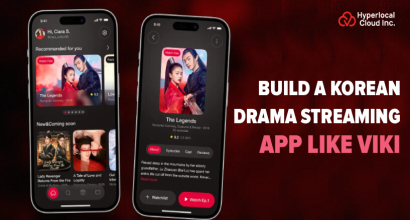A hyperlocal delivery business model is a way of conducting business that adapts quickly and locally to customer needs. Local businesses use a digital platform to deliver goods or services, such as prescription medications, alcoholic beverages, groceries, meals, and beverages.
In contrast to e-commerce, hyperlocal delivery ensures same-day delivery within a few hours or minutes. This is what differentiates a hyperlocal service company the most.
Order fresh groceries from a hyperlocal service like Dunzo, Instamart, or Swiggy. The app receives the order and transmits the data to the delivery person and the nearby shop. In the present, the individual bringing you meals picks them up from the store and delivers them in 15 to 20 minutes. This is how deliveries to incredibly small areas are made.
Now that you know this strategy's purpose, let's examine what a hyperlocal company looks like.
A hyperlocal delivery business model has the following features: It focuses on the people in a certain area for on-demand goods and services.
What makes this model stand out is that it gives local customers high-quality services and goods at an effective and faster speed than they thought.
It helps the local business by focusing on a local group.
It brings together customers, the market, and aggregators in a way that works well and promotes a fair market.
Let Your Business Meet Its True Potential
What is the Hyperlocal Delivery Model?
Hyperlocal refers to a small geographical place and a clear group of people. Hyperlocal can mean your neighborhood or the area around you. The hyperlocal model lets a business meet the wants of the people in a certain area.
It's an online delivery approach that meets customers' needs using a local ecosystem. This means the pickup and delivery locations must be in the same zone.
The customer orders a product or service through an app, and the business that uses this shipping model gets the order. The app then sends the details of the orders to the aggregator, who assigns a person to deliver the goods or services to the customer's home.
Why Should Vendors Select Hyperlocal Models?
The concept is easy to scale up because it only works in one place.
- Low funding is needed because there is no pressing need for an inventory. This differs from a model based on an inventory, where warehouses are needed.
- Implementing the plan is easy because it focuses on a local area. For example, items from a nearby store can be brought to people within minutes.
With hyperlocal delivery, you can get a lot of different goods and services, such as:
- Grocery delivery
- Food ordering services
- Handyman services
- Personal care services
- Deals from close-by businesses
The Positive Aspects Of The Hyperlocal Delivery Business Model
In this digital age, when more and more businesses are moving online, it's hard for neighborhood retailers to stay in business. The hyperlocal delivery strategy helps these kinds of stores stay in business and get more customers. Besides this, there are many other perks to the hyperlocal delivery model, such as-
Speedy deliveries
- From a single device or dashboard, you can control delivery.
- A better view of operations
- Help the companies in your area
- There's no need to open an online shop.
Which Hyperlocal Delivery Business Models Are There?
The hyperlocal delivery business model or hyperlocal marketplace models can be categorized into four main categories:
Single Store Concept
This business model is suitable for well-established stores that wish to expand their consumer base through their online presence. They can develop a hyperlocal on-demand delivery application and list their products to achieve this. Dominos, HelloFresh, and BigBasket are just a few companies that use this model.
Store Pick Model
One of the most widely used methods is store pick, which enables customers to place online orders and pick their products up from neighboring stores. The store prepares and packs the order as soon as the order is submitted before the customer arrives. Customers can pick up their orders from the store without waiting in lengthy lines.
Hybrid Model
Retailers utilize a hybrid delivery model to provide residential delivery and in-store pickup. In addition, it allows consumers to select the delivery method of their choosing.
Aggregator Model
In an aggregator model, the hyperlocal delivery service provider mediates between the customer and the store. Establishing connections with nearby establishments and starting product deliveries aids online retailers in extending their reach. A vendor approach perfectly captured by Zomato and Instacart.
The Growth Of The Hyperlocal Delivery Business Model
Three significant factors increase demand for hyperlocal delivery companies. That is:
- Internet access is simple
- Smartphone evolution
- Hectic existence
Alluring Features Of Hyperlocal Business
Initial Auto-Detection
The hyperlocal business model is built on geo-based technology, a big part of a vendor going online and being competitive. This will enable businesses to connect with local customers and offer them their goods and services.
A well-designed hyperlocal system helps clients find the place and receive the list of vendors, goods, and services.
Dual-Way Communication
The next thing that the hyperlocal marketplace has is communication that goes both ways. Communication is crucial for both users and businesses and should always be open and transparent to solve issues from both sides.
Keeping Track Of Stock
A hyperlocal marketplace should have a function in its mobile application for inventory management so that customers may order and receive updates about the available stock and goods based on their location.
Delivery & Shopper Availability
Hyperlocal marketplaces are distinct from eCommerce because they offer same-day delivery of goods and services. Shop owners can enable users to check the delivery slot availability, including day, time, and date, before making an order by investing in the application.
Vendor/Store Checkouts
Even in the hyperlocal market, no customer wants to wait for their goods or services. They want to purchase items as fast as possible from various retailers at various costs from various locations. However, every brand, retailer, and seller has a unique strategy.
Quick Search
Contact the top delivery app development company's high-end services or the search box to perform a direct search.
Improved UX
Customers can be drawn to our premium meal delivery app solutions by the improved user interfaces and experiences.
Chat Support
Our hyperlocal delivery application development will ensure that the customers and food outlets can chat support around the clock.
We Put The Wow In Technology With Our Hyperlocal Marketplace Software Solution
How To Launch A Business Using A Hyperlocal Delivery Model?
If you choose your e-commerce company's hyperlocal model, you must take the actions outlined below.
Select The Industry
First and foremost, you must select the industry around which you will construct the hyperlocal delivery model. It may be for supplies, food delivery, prescription medications, or other items. The market you select will determine your company's future.
Determine Your Target Audience
Following the selection of the industry, the next stage is to determine the intended audience. You must determine who you wish to serve, as you cannot appeal to everyone.
Establish The Partnership
Now is the time to partner with the retail store and aggregator to supply your customers with goods and services. You must choose them carefully, as your company's reputation depends on them. The distribution network must be robust.
Select a Revenue Model
Consider how you intend to generate income from this business and your business model. Inventory-led models, aggregator models, and mixed approaches exist in the hyperlocal business model. Choose the option that matches your business.
Companies Using the Hyperlocal Delivery Business Model
Haptik
This app allows you to book movie tickets, charge your phone, and order food.
Zomato
One of the most popular apps in India that helps people order food. You can book a table at a restaurant, order food, and find more than one place that serves your favorite food.
Blinkit
This app brings groceries to your home. It also brings you other things, like makeup and frozen foods.
Building a Successful Hyperlocal On-Demand Delivery Business Solution: A Step-by-Step Guide
Follow the steps below to start your hyperlocal delivery services and make sure your customers are happy with the best of your on-demand apps and services:
Choose An Audience For Your Company
The people who can use hyperlocal delivery services are not limited to one group. So think carefully about what goods or services you want to sell since you can choose and start more than one service.
Trying To Reach People In The Area
Your marketing plan will depend on who you want to reach (mostly people in your area, but sometimes people from other places) and what industry you want to reach. Your target audience could be people who work and don't have time to go to the grocery store or businesses wanting everything on the table.
Establish Trust, Work Together, And Close The Sale!
Every firm should prioritize networking. After completing the first two phases, expand your network among hyperlocal companies. To develop a strong on-demand delivery network, you must gain your audience's trust. After earning someone's confidence, you can partner with Delivery Partners and Local Merchants.
Create A Business Model
Consider how the hyperlocal business model generates revenue before developing your revenue model. Both commissions from the merchant partner and delivery fees from the consumer would be the foundation of your income plan.
Nowadays, charging customers for delivery is out of style because most service providers offer free delivery. Establish solid relationships with neighborhood retailers and agree to pay a certain commission on each order, a percentage of the total.
Conclusion
Local businesses can improve their online presence and exposure by using hyperlocal on-demand delivery solutions. Since local merchants didn't create their own apps, it is advantageous for them as well because they may list their names on your on-demand hyperlocal delivery software.
Therefore, this is an amazing situation to develop an on-demand hyperlocal delivery app considering all the advantages and features. You always have the choice to employ a committed team that will support you from consultation to successful deployment if you lack the expertise to build the app you desire.



